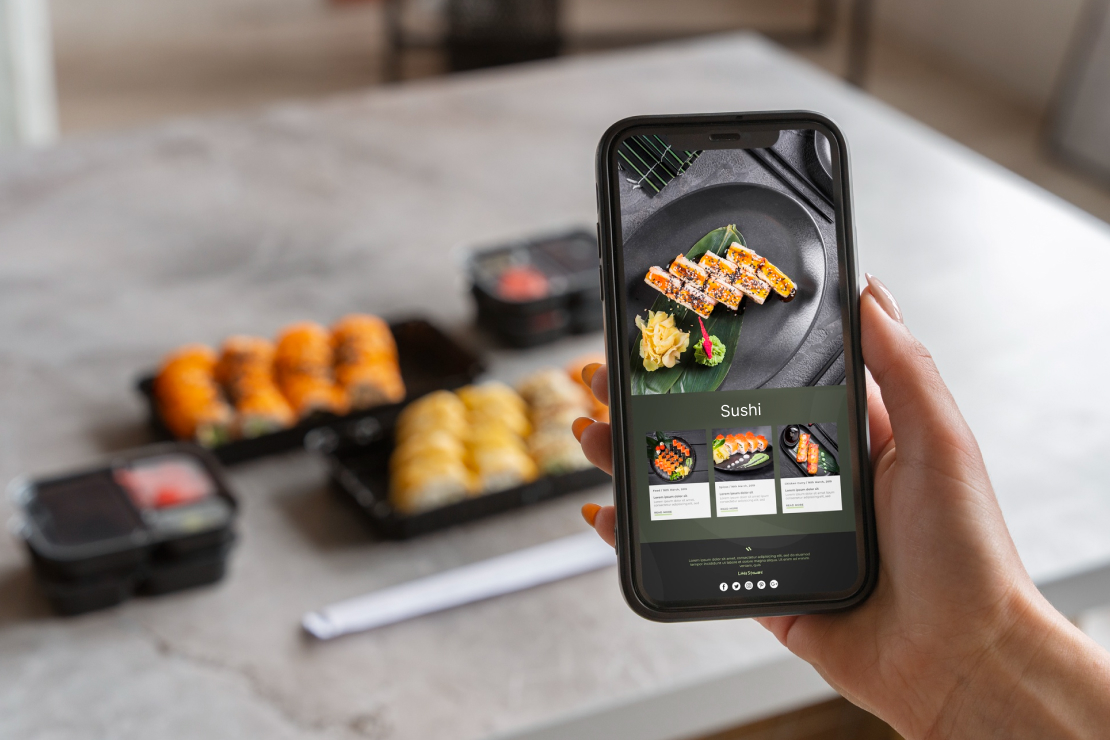How Dopamine 'The feel-good' hormone' drives overeating and How to Take Back Control
Discover the powerful role of dopamine in driving overeating behaviors and learn science-backed strategies to regain control over your eating habits and foster a healthier relationship with food.

Table of Content
Introduction: The Pleasure Principle and Our Plates
In our modern world, where highly palatable foods are abundant and easily accessible, many of us find ourselves caught in a cycle of overeating, even when we're not physically hungry. This isn't simply a lack of willpower; it's often deeply rooted in our brain's intricate reward system, specifically involving a powerful neurotransmitter known as dopamine. Often dubbed the "feel-good" hormone, dopamine plays a central role in motivation, pleasure, and reinforcement, and understanding its influence on our eating habits is the first crucial step toward taking back control.
The Science of Dopamine and the Brain's Reward System
Dopamine is a key player in the brain's reward pathway, a network of structures that motivates us to seek out and repeat behaviors essential for survival, such as eating, drinking, and reproduction. When we engage in these behaviors, dopamine is released, creating a sensation of pleasure and reinforcing the action.
- Motivation and Anticipation: Dopamine isn't just about pleasure; it's primarily about the anticipation of pleasure. Its release spikes when we expect a reward, driving us to pursue it.
- Reinforcement Learning: When a behavior leads to a dopamine release, the brain "learns" that this behavior is rewarding and is more likely to repeat it in the future.
- Survival Mechanism: This system evolved to ensure our ancestors sought out calorie-dense foods, which were scarce. In today's environment, it can lead to overconsumption.
Dopamine and Food: The Pleasure Trap
Certain foods are particularly adept at triggering a strong dopamine response. These are typically foods high in sugar, fat, and salt – a combination rarely found in nature but common in processed foods.
| Food Characteristic | Dopamine Impact | Effect on Eating Behavior |
|---|---|---|
| High Sugar Content | Rapid and significant dopamine spike. | Creates intense cravings and a desire for more. Leads to a "sugar rush" followed by a crash. |
| High Fat Content | Sustained dopamine release, enhances palatability. | Increases the rewarding sensation of food, making it harder to stop eating. |
| High Salt Content | Enhances flavor, indirectly boosts dopamine. | Contributes to the "bliss point" of processed foods, making them highly addictive. |
| Processed Foods | Engineered to maximize dopamine release. | Designed to be "hyper-palatable," overriding natural satiety signals. |
When we consume these foods, the brain is flooded with dopamine, creating a powerful sense of reward. Over time, the brain can become desensitized to these dopamine surges, requiring more and more of the stimulating food to achieve the same level of pleasure. This creates a vicious cycle, often referred to as the "dopamine loop," where we eat not out of hunger, but out of a compulsive drive for that dopamine hit.
The Cycle of Dopamine-Driven Overeating
This compulsive eating pattern often unfolds in a predictable cycle:
- Trigger: Stress, boredom, sadness, or even just the sight/smell of a rewarding food.
- Craving: An intense desire for the rewarding food, driven by the anticipation of dopamine release.
- Consumption: Eating the food, leading to a temporary dopamine surge and a feeling of pleasure or relief.
- Crash/Guilt: The dopamine levels drop, often leaving feelings of guilt, shame, or disappointment, which can then become a new trigger.
This cycle reinforces itself, making it increasingly difficult to break free from overeating patterns. The brain learns to associate these foods with comfort and reward, even if the long-term consequences are negative.
Taking Back Control: Strategies to Break the Dopamine Loop
Breaking free from dopamine-driven overeating requires a multi-faceted approach that addresses both the biological and psychological aspects of this cycle. It's about retraining your brain's reward system and building healthier coping mechanisms.
1. Mindful Eating: Reconnecting with Hunger and Satiety
Mindful eating is a powerful tool to disrupt the automatic, dopamine-driven response to food. It involves paying full attention to the eating experience, without judgment.
- Slow Down: Eat slowly, savoring each bite. This allows your body's natural satiety signals (which take about 20 minutes to reach the brain) to catch up.
- Engage Your Senses: Notice the colors, textures, aromas, and flavors of your food. This enhances the eating experience and can increase satisfaction.
- Distraction-Free Eating: Avoid eating in front of screens (TV, phone, computer). Distracted eating leads to mindless consumption and reduced awareness of fullness.
- Assess Hunger Levels: Before eating, ask yourself if you're truly hungry. Use a hunger scale (1-10) to gauge your physical hunger before and after meals.
2. Nutritional Strategies: Balancing Blood Sugar and Hormones
What you eat significantly impacts your dopamine response and subsequent cravings. Focusing on nutrient-dense, whole foods can help stabilize blood sugar and reduce the intense dopamine spikes associated with processed foods.
- Prioritize Protein: Protein is highly satiating and has a lower impact on blood sugar compared to refined carbs. Aim for 20-30g of protein per meal to promote fullness and reduce cravings.
- Increase Fiber Intake: Fiber slows digestion, leading to a more gradual release of glucose into the bloodstream, preventing sharp blood sugar spikes and crashes that trigger cravings. Include plenty of fruits, vegetables, legumes, and whole grains.
- Incorporate Healthy Fats: Healthy fats contribute to satiety and can help stabilize blood sugar. Sources like avocados, nuts, seeds, and olive oil are excellent choices.
- Avoid Ultra-Processed Foods: These foods are engineered to be hyper-palatable and trigger maximum dopamine release. Reducing their intake is crucial for retraining your brain.
3. Lifestyle Adjustments: Supporting Your Brain and Body
Beyond diet, several lifestyle factors can significantly influence your dopamine sensitivity and ability to manage cravings.
- Optimize Sleep: Sleep deprivation disrupts hunger hormones (ghrelin and leptin) and can increase cravings for high-calorie foods. Aim for 7-9 hours of quality sleep per night.
- Manage Stress: Chronic stress elevates cortisol, which can increase appetite and cravings. Incorporate stress-reducing practices like meditation, yoga, deep breathing, or spending time in nature.
- Regular Exercise: Physical activity can naturally boost dopamine levels in a healthy way, reducing the need to seek it from food. It also improves insulin sensitivity and mood.
- Hydration: Sometimes, thirst is mistaken for hunger or cravings. Drink plenty of water throughout the day.
4. Behavioral Techniques: Disrupting the Pattern
When a craving strikes, instead of immediately giving in, try these techniques to create a pause and break the automatic response.
- The 10-Minute Rule: When a craving hits, commit to waiting just 10 minutes before acting on it. Often, the intensity of the craving will subside.
- Distraction: Engage in an activity that requires your full attention – call a friend, go for a walk, read a book, or do a quick chore.
- Substitute Healthy Pleasures: Find non-food activities that give you a dopamine boost – listen to music, pursue a hobby, spend time with loved ones, or engage in light exercise.
The Role of AI in Managing Dopamine-Driven Eating
Modern nutrition technology, like Macro Tracking AI, can play a supportive role in understanding and managing dopamine-driven eating patterns. While AI cannot replace human intuition or professional psychological support, it can provide objective data and insights.
- Pattern Identification: AI can analyze your food logs, mood entries, and activity data to identify correlations between specific triggers (e.g., stress, lack of sleep) and subsequent overeating episodes.
- Personalized Nudges: Based on learned patterns, the AI can send timely, gentle reminders or suggest healthier alternatives when it predicts a craving might strike.
- Nutrient Balance Analysis: The app can highlight potential nutritional gaps (e.g., insufficient protein or fiber) that might be contributing to cravings, guiding you toward more balanced meals.
Conclusion: Reclaiming Your Relationship with Food
Dopamine is a powerful force that can inadvertently drive overeating, especially in a food environment designed to exploit our brain's reward system. However, by understanding its mechanisms and implementing a combination of mindful eating, strategic nutrition, and healthy lifestyle adjustments, you can effectively retrain your brain and take back control. It's a journey of self-awareness, patience, and consistent effort, but the reward—a healthier, more balanced relationship with food—is well worth the effort.
"The path to freedom from compulsive eating begins not with deprivation, but with understanding the whispers of our own biology and learning to respond with wisdom, not just instinct."
Frequently Asked Questions
Can I completely eliminate dopamine's influence on eating?
No, dopamine is a vital neurotransmitter involved in many essential brain functions. The goal isn't to eliminate its influence, but to rebalance your brain's reward system so that healthy behaviors (like eating nutritious foods or exercising) also provide sufficient dopamine, reducing the compulsive drive for hyper-palatable foods.
Are some people more susceptible to dopamine-driven overeating?
Yes, genetic predispositions, individual differences in dopamine receptor sensitivity, and early life experiences can make some individuals more vulnerable to developing compulsive eating patterns in response to rewarding foods.
How long does it take to "reset" my dopamine response to food?
The timeline varies greatly among individuals. Consistent effort in reducing intake of highly rewarding foods, increasing healthy habits, and practicing mindfulness can start to show noticeable changes in cravings and satisfaction within a few weeks to a few months. Long-term change requires sustained effort.
Can exercise help reduce dopamine-driven cravings?
Absolutely. Exercise, particularly moderate to intense physical activity, naturally stimulates dopamine release in the brain. This can provide a healthy, non-food-related source of reward, helping to reduce the brain's reliance on food for pleasure and potentially lessening cravings over time.
Start Your Health Journey Today
Download Macro Tracking AI and take control of your nutrition with the power of artificial intelligence.
Download on App Store

